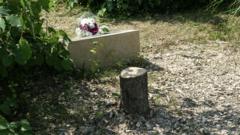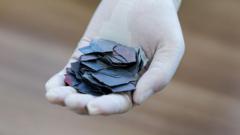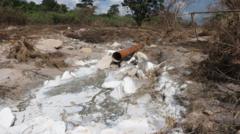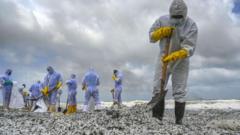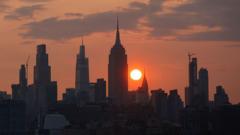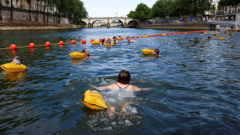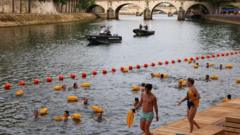The Seine River in Paris has officially reopened for swimming after years of being polluted and off-limits. Following extensive cleanup efforts, officials have launched swimming sites, allowing locals to enjoy the water and marking a significant milestone in environmental recovery.
Swimming Returns to the Seine: A Historic Reopening for Locals

Swimming Returns to the Seine: A Historic Reopening for Locals
After over a century of swimming bans due to pollution, the Seine River in Paris is now welcoming swimmers again, with designated sites opened for the public and water quality assurances in place.
The Seine River, long banned for swimming due to pollution, has reopened its waters to the public under careful observation and renewed environmental standards. This move is part of France's efforts to clean the river, particularly in preparation for the upcoming Olympics.
On Saturday, locals, including Martine Laupin, aged 76, expressed their joy at finally being able to swim in the iconic river again. "What a joy. What a joy," she proclaimed while enjoying a swim beneath the famous Parisian landmarks.
This revitalization includes three swimming sites along the Seine in Paris and two additional sites along the Marne River nearby. The citizens enjoyed the refreshing green water while safety measures ensured the water quality was suitable for swimming—a green flag signaled approval just before their plunge.
The revival of swimming in the Seine represents not just a nod to recreational enjoyment but a broader triumph for environmental advocacy. The reopening serves as a testament to France's commitment to restoring natural urban waterways, aiming to transform the image of the Seine from a polluted river to a clean, accessible resource for future generations.
With this revitalization of a public space once deemed dirty and dangerous, the anecdotal returns from swimmers symbolize a collective hope for cleaner water and environmental changes in urban settings around the globe. Looking ahead, it sets a precedent for how cities can reclaim and repurpose their natural resources in sustainable, community-oriented ways.
On Saturday, locals, including Martine Laupin, aged 76, expressed their joy at finally being able to swim in the iconic river again. "What a joy. What a joy," she proclaimed while enjoying a swim beneath the famous Parisian landmarks.
This revitalization includes three swimming sites along the Seine in Paris and two additional sites along the Marne River nearby. The citizens enjoyed the refreshing green water while safety measures ensured the water quality was suitable for swimming—a green flag signaled approval just before their plunge.
The revival of swimming in the Seine represents not just a nod to recreational enjoyment but a broader triumph for environmental advocacy. The reopening serves as a testament to France's commitment to restoring natural urban waterways, aiming to transform the image of the Seine from a polluted river to a clean, accessible resource for future generations.
With this revitalization of a public space once deemed dirty and dangerous, the anecdotal returns from swimmers symbolize a collective hope for cleaner water and environmental changes in urban settings around the globe. Looking ahead, it sets a precedent for how cities can reclaim and repurpose their natural resources in sustainable, community-oriented ways.

